
Works
(1961-1962) - Roma - Landscaping and roof gardens for ENI building and residential village
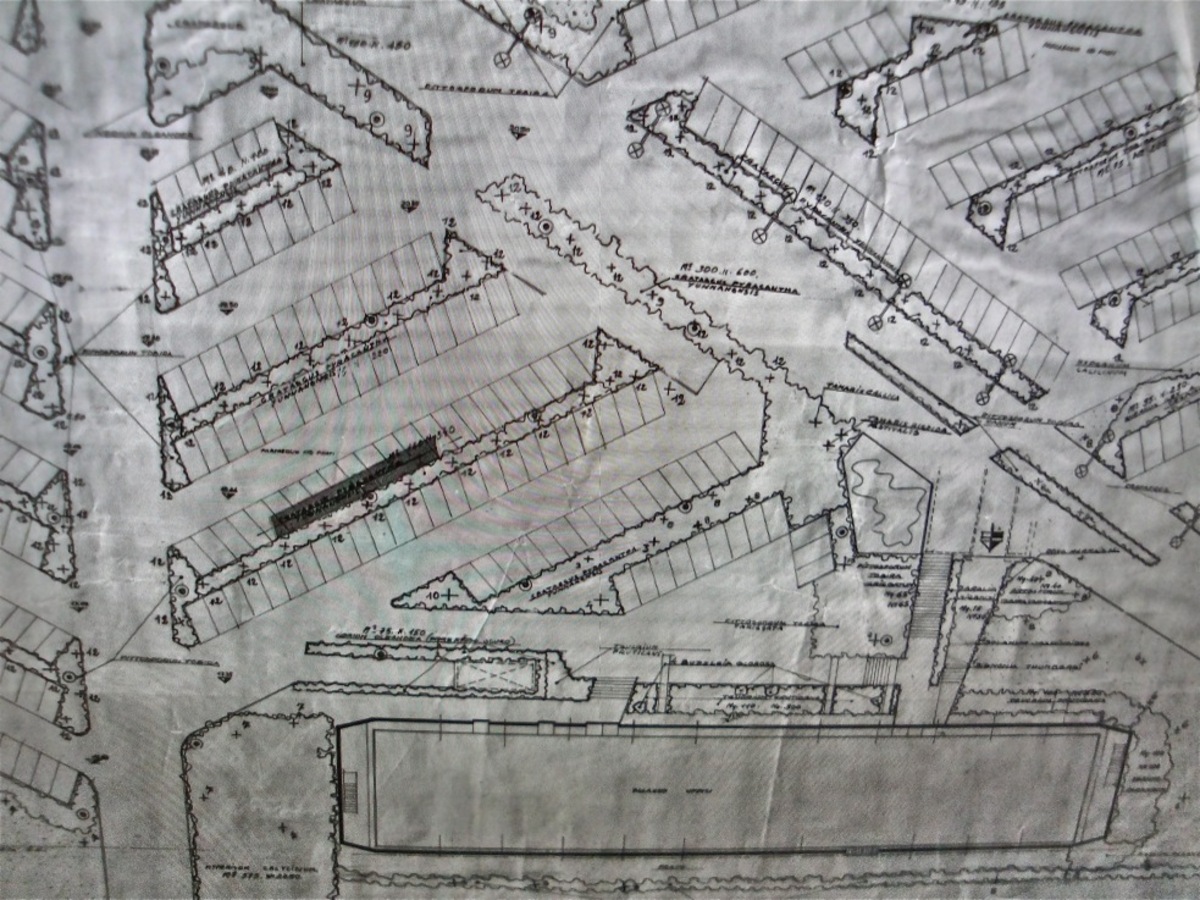
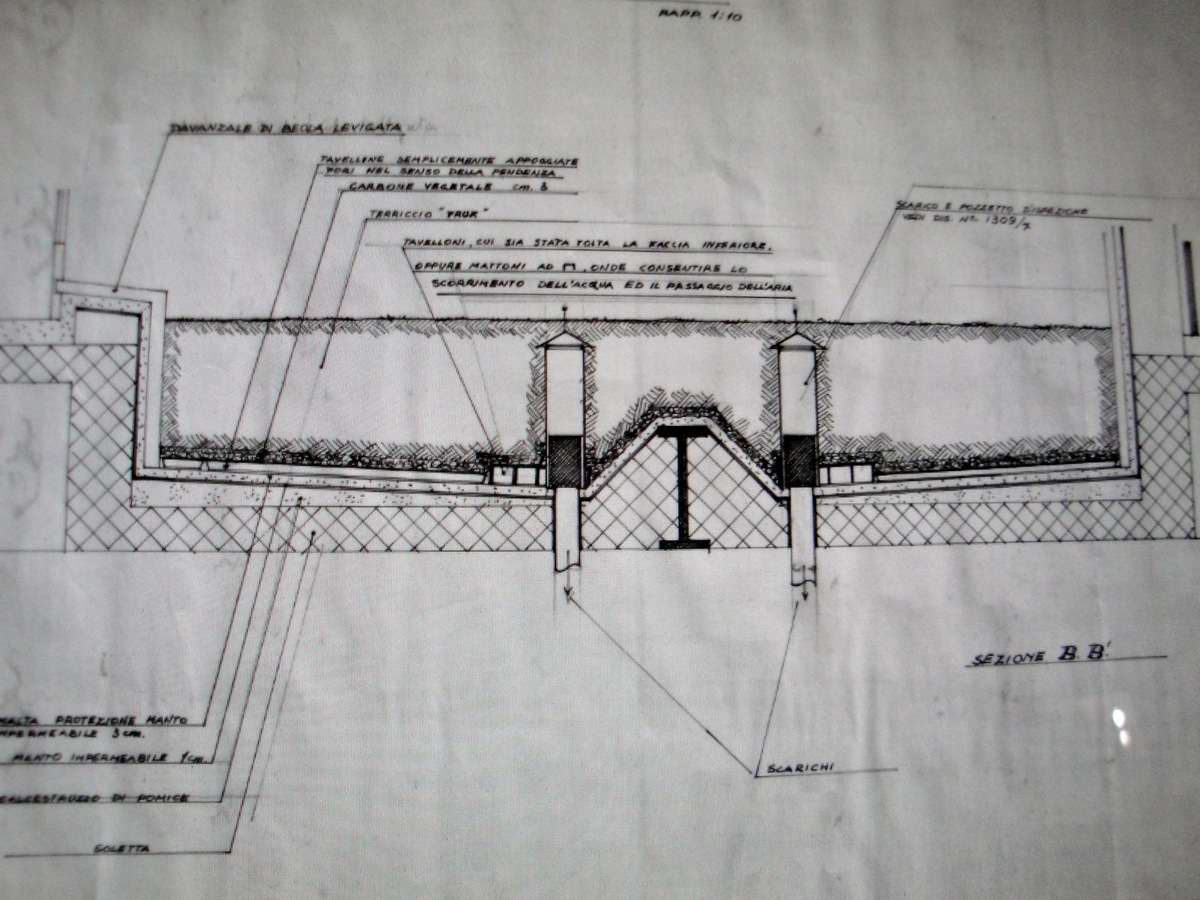
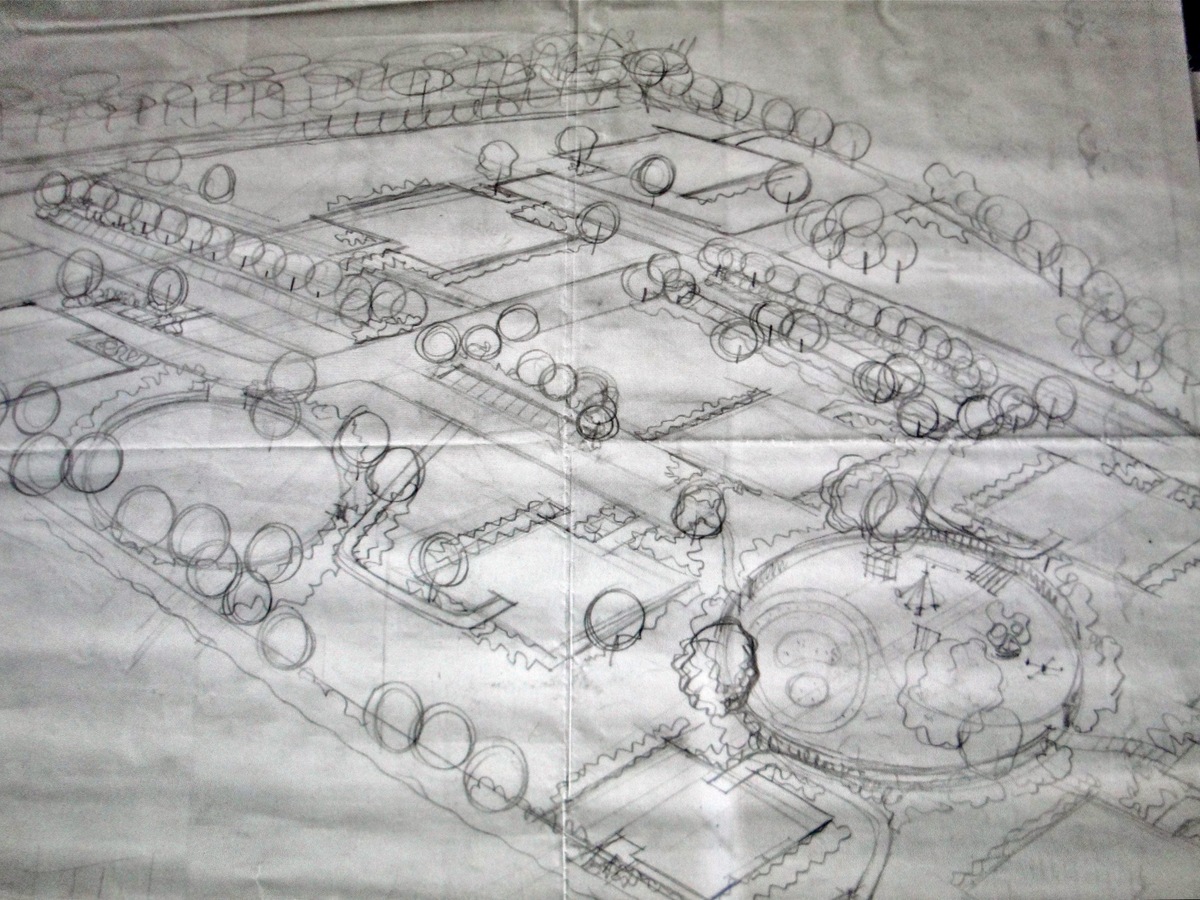
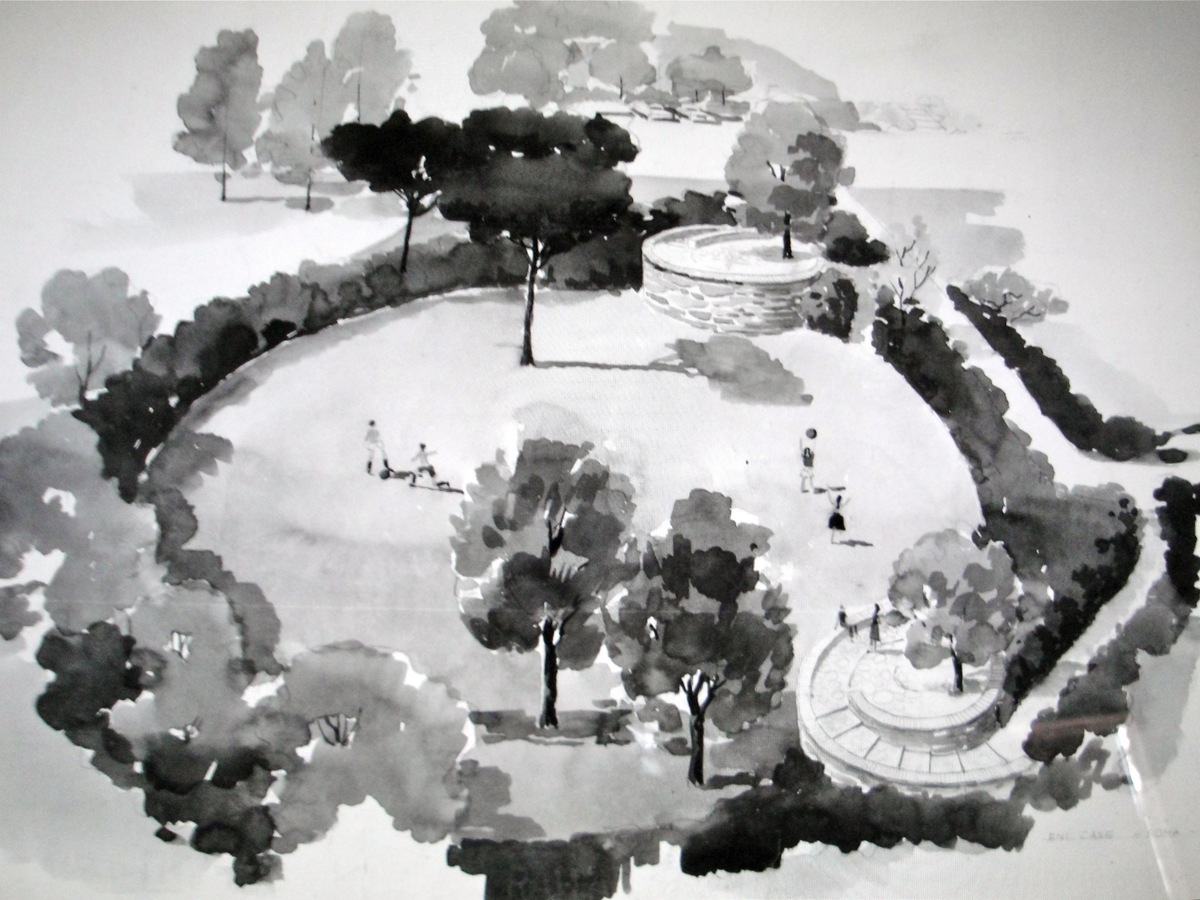
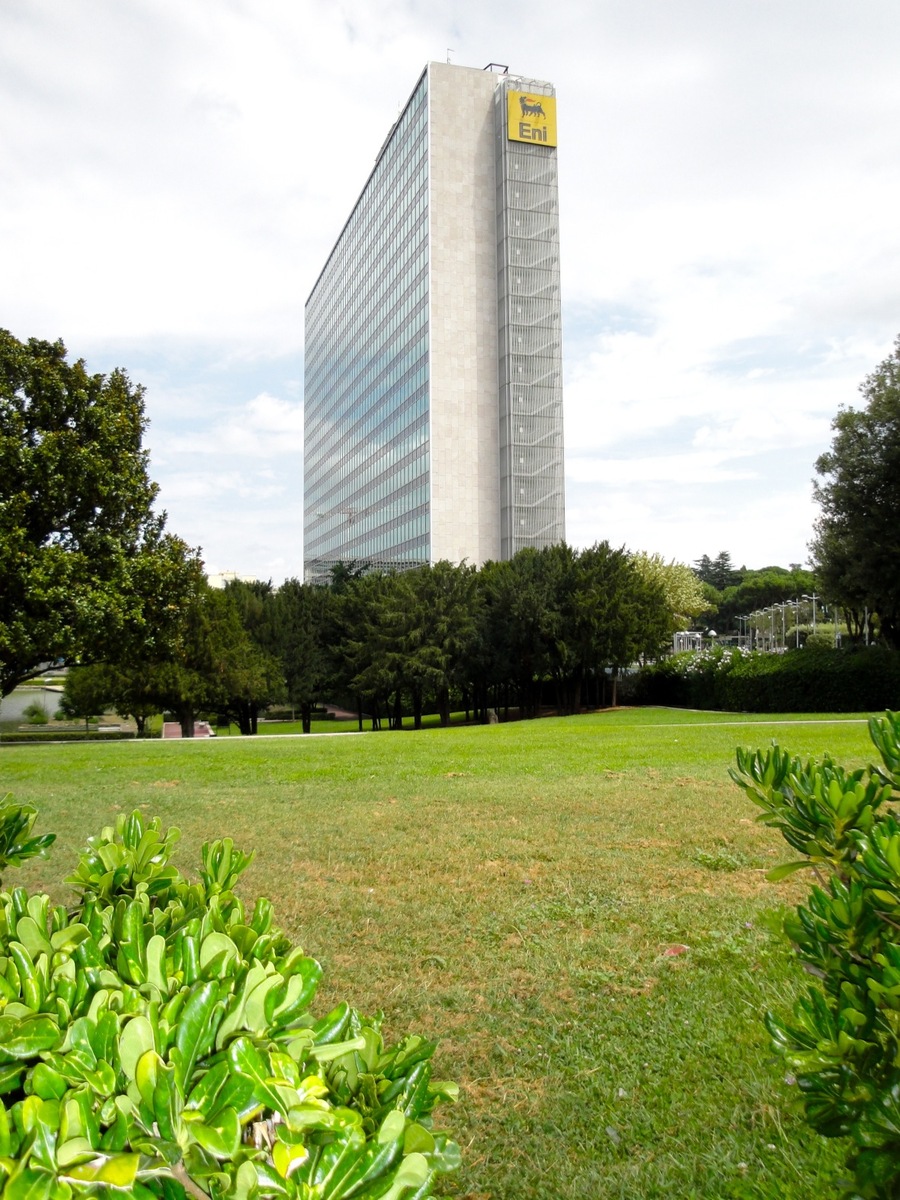
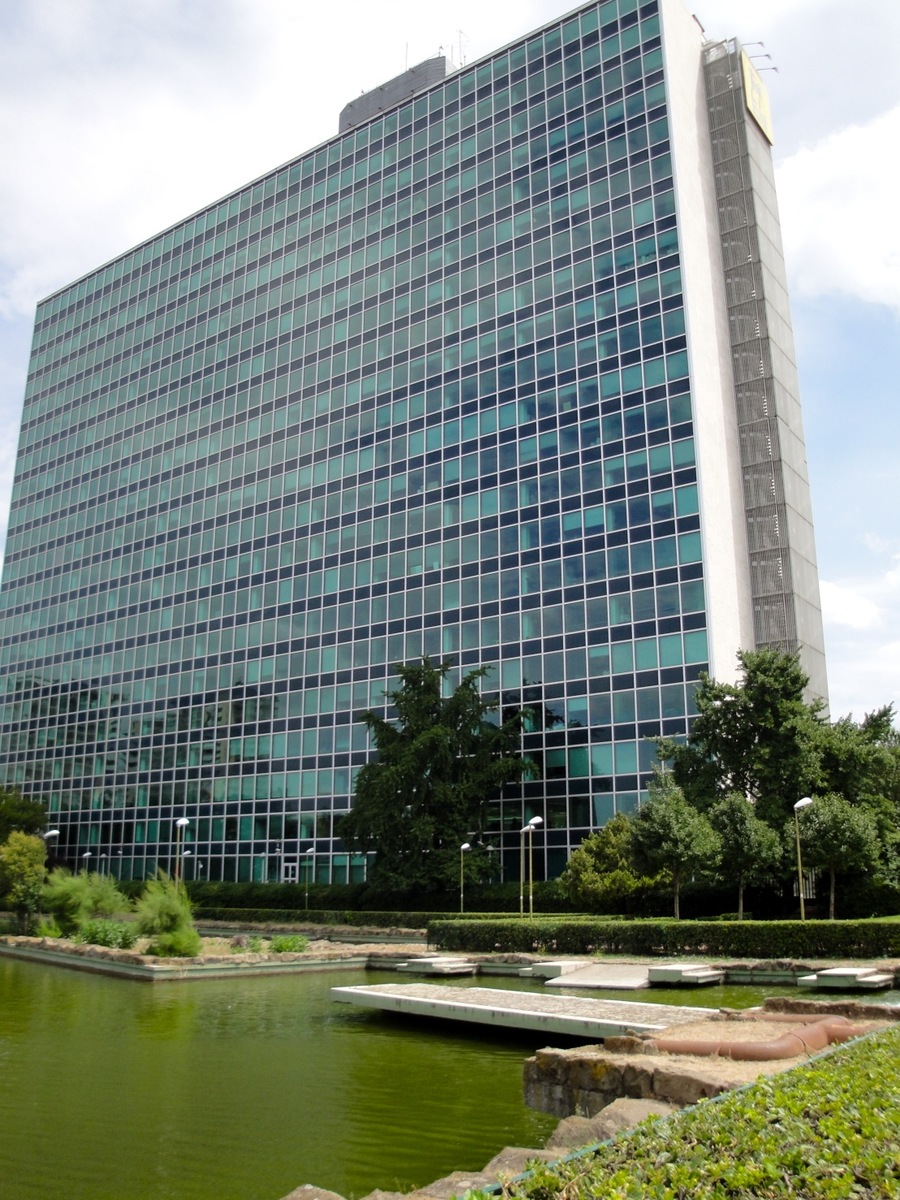
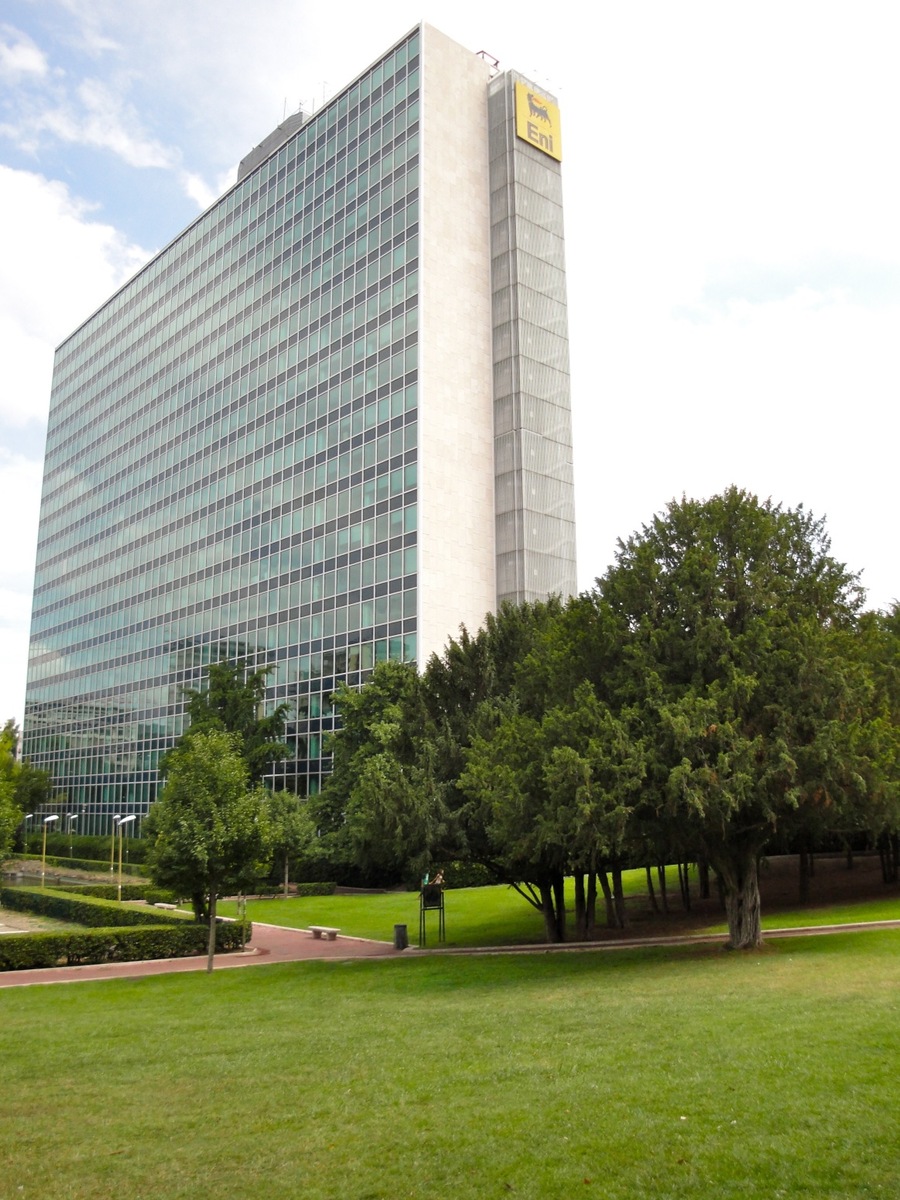
Few industrial groups in Italy have devoted special attention to achieving harmony between their plant and production areas and the landscape. In the postwar reconstruction period, two examples of this approach were OLIVETTI and ENI, and this was thanks to two great public figures – Adriano Olivetti and Enrico Mattei – who had even then grasped the importance of environmental issues and the imperative to provide territorial safeguards. Porcinai collaborated with ENI in Rome (EUR – National Headquarters), in San Donato Milanese (Metanopoli), and in Pugnochiuso (Vieste, Gargano - Centro Vacanze ENI).
The Rome office building, designed in 1958 by the architects Ratti, Bacilugo, Finzi, and Nova, was completed in 1962. Other work in the extensive surrounding space, about 100 meters distant from the building, included a cafeteria building and all around a parking lot for 1000 cars. Porcinai designed the landscaping for the areas surrounding the office building, the cafeteria building, and the large parking facility. In order to lend unity and personality to the whole, the landscape artist selected few species of trees (_Quercus ilex_ in alberello form, _Catalpa bignonoides, Celtis australis, Acacia dealbata, Magnolia grandiflora, Liriodendron tulipifera, Ginko biloba, Ligustrum japonicum, Tamarix gallica, T. hispid a,_ etc.) and shrubs (aralia, oleander, bouganvillea, strawberry tree, pittosporum, _Rosa mutabilis chamois, Rosa polyanta, Myrtus communis, Teucrium fruticans,_ etc.). He also designed the roof gardens on the upper floors of the office building and the landscaping of the employee residential complex, also in the EUR district on Viale Oceano Atlantico. The pedestrian and vehicle paths and roadways in the quarter are kept rigorously separate. Each building is surrounded by gardens that are accessible only on foot: cars may be parked only in designated areas. The centers of gravity of the complex as a whole are represented by circular recreation areas. Here as in other areas, just a few types of trees are featured _(Acacia dealbata, Catalpa bignonoides, Lagerstroemia indica, Celtis australis, Quercus ilex,_ etc.). Large areas of _Pittosporum tobira_ and _Rhamnus alaternum_ delimit the lawns that surround the residential quarters; the lawns, in turn, are adorned with compositions of _Aucuba japonica, Cotoneaster simonsii, Lavandula vera, Lonicera sempervirens, Myrtus communis, Rosmarinus officinalis, Rosa bengalensis,_ etc. (Ph.: © Paola Porcinai)


